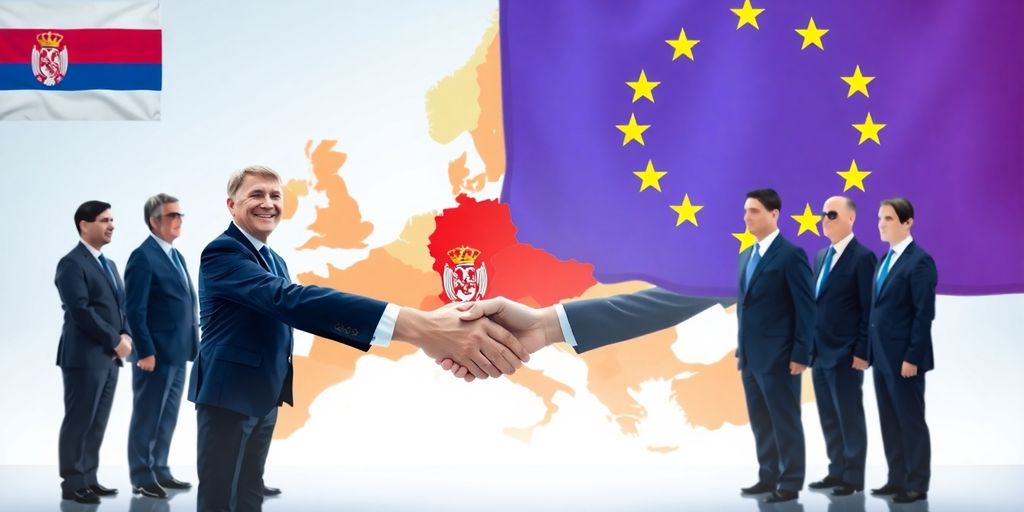Serbia has officially joined the Single Euro Payments Area (SEPA), a significant milestone that enhances its financial integration with the European Union. This decision, approved by the European Payments Council (EPC), is expected to streamline euro transactions for Serbian citizens and businesses, making them faster and more cost-effective.
Key Takeaways
- Serbia is now the 41st country to join SEPA, enhancing its financial ties with the EU.
- The move is part of the EU’s Growth Plan for the Western Balkans, aimed at boosting regional economic integration.
- Serbian payment service providers will be able to participate in various SEPA schemes, facilitating euro transactions.
- Implementation of SEPA in Serbia is expected to be fully operational by May 2026.
What Is SEPA?
The Single Euro Payments Area (SEPA) is an initiative of the European Union that simplifies bank transfers denominated in euros. It allows individuals and businesses to make cashless euro payments across Europe as easily as they would in their home country. SEPA aims to create a more integrated and efficient payment system across member states, reducing costs and processing times for cross-border transactions.
Benefits of Joining SEPA for Serbia
- Cost Reduction: By joining SEPA, Serbia will eliminate the need for intermediary banks in euro transactions, significantly lowering costs for both citizens and businesses.
- Faster Transactions: Payments will be processed more quickly, enhancing the efficiency of financial operations.
- Increased Foreign Investment: Improved payment systems are likely to attract more foreign direct investments (FDIs), crucial for Serbia’s economic growth.
- Alignment with EU Standards: Joining SEPA is a step towards aligning Serbia’s financial regulations with EU standards, facilitating its long-term goal of EU membership.
Implementation Timeline
- November 2025: Serbian financial institutions will begin adhering to SEPA payment schemes.
- May 2026: The earliest Operational Readiness Date (ORD) for Serbian payment service providers to fully implement SEPA transactions.
Economic Context
Serbia’s accession to SEPA is part of a broader strategy to integrate the Western Balkans into the EU’s single market. The European Commission’s Growth Plan for the Western Balkans, adopted in November 2024, aims to enhance regional cooperation and economic development. This plan includes increasing pre-accession funding and advancing necessary reforms in candidate countries.
Challenges Ahead
While joining SEPA marks a significant achievement, Serbia still faces challenges on its path to EU membership. Key areas for improvement include:
- Strengthening the rule of law and political dialogue.
- Continuing reforms to combat corruption.
- Reaching a comprehensive normalization agreement with Kosovo.
- Aligning fully with EU external policies.
Conclusion
Serbia’s membership in the Single Euro Payments Area is a pivotal development in its journey towards EU integration. By facilitating easier and cheaper euro transactions, this move not only benefits Serbian citizens and businesses but also positions Serbia as a more attractive destination for foreign investment. As the country prepares for full implementation by 2026, the focus will remain on overcoming existing challenges to ensure a smooth transition into the European financial landscape.
Sources
- EU Welcomes Serbia’s Membership of Single Euro Payments Area, Balkan Insight.
- Serbia becomes part of SEPA, The Paypers.
- Serbia becomes a part of the Single Euro Payments Area (SEPA), European Western Balkans.
- Serbia joins SEPA — TradingView News, TradingView.






